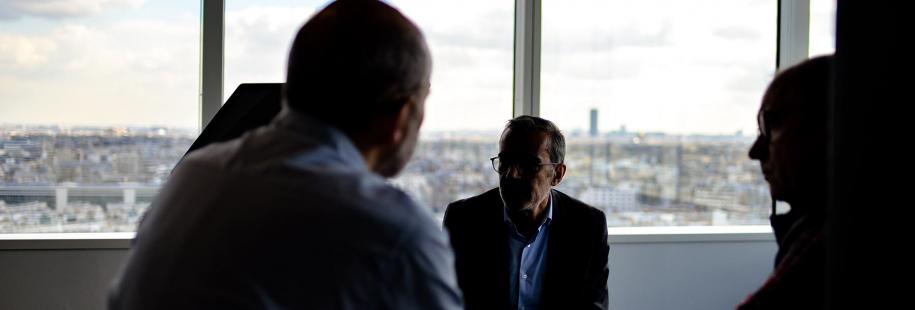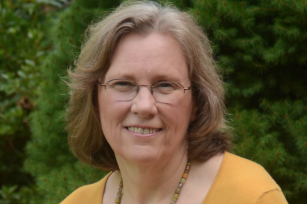
Breadcrumb
- Essential Partners
- Our Impact
- News and Notes
- Reflections on Dialogue, Art, and Neutrality
Reflections on Dialogue, Art, and Neutrality
These reflections were shared at a quarterly Learning Exchange of the Animating Democracy Initiative, March 8-10, 2002, Minneapolis, Minnesota.

When I feel lost in my work, I focus my attention on purpose. If I pay attention to purpose, then ask myself what sorts of things I might do that will contribute to this purpose or detract from it, I find myself able to make decisions about what to do. The purpose question for me, on its largest and most general level, is: What is the purpose of dialogue?
Here’s how I, and my colleagues at Essential Partners, think about dialogue.
Dialogue is any conversation that is animated by a search for understanding rather than for agreements, persuasion, or solutions. (It is often a good prelude to interactions aimed at generating solutions and actions, but it is not, in itself oriented in that way). A good dialogue offers those who participate the opportunity to:
- Listen and be listened to so that all speakers can be heard
- Speak and be spoken to in a respectful manner
- Develop or deepen mutual understanding
- Learn about the perspectives of others and
- Reflect in fresh ways on one’s own views
Some dialogues happen spontaneously and naturally among people whose relationships are so valued that they are motivated to stay in compassionate connection, in spite of their differences.
When relationships are characterized by antagonism, blaming, shaming, stereotyping, and dehumanization, however, dialogue is a very unnatural kind of conversation. Contexts to support dialogue need to be consciously constructed and maintained and the people who enter those contexts need to be motivated to try something new.
What are the conditions that enable or foster dialogue? Here are my thoughts.
- The context is safe enough to be welcoming of the authentic expression of all. Note that being safe enough is not the same as being comfortable.
- There are some agreements or guidelines that make explicit what participants can do or avoid doing to have a mutually satisfying dialogue experience.
- There is an explicit shared goal, even if very general, which interests and energizes the participants, e.g., building community, managing differences in ways that are constructive.
- There are no hidden agendas. Hidden agendas are toxic to dialogue; transparency and generosity of spirit are supportive of dialogue.
- There are trusted convener / facilitators who maintain and support the conditions and spirit of dialogue.
- The structures, formats and questions are designed to foster fresh conversations, avoid old dead-ends and habits, and foster understanding and reflection. In other words, they are chosen to serve the purposes listed above.
In order to plan a dialogue that is energizing, welcoming, and impactful, you will want to know:
- What conversations are already happening? Which are seen as constructive? Destructive? For and by whom?
- What resources exist in the community for creating contexts of enough trust and safety?
- Who might help you communicate about the purpose of dialogue to various “constituents”? Who might want to participate, with what purpose?
- Whose involvement would contribute to positive impact outside of the room, in the community? If a segment of a community is to be in dialogue, what positive or negative consequences might there be for the broader community?
- Have there been attempts in the past to have dialogue? What happened that was useful or not, healing or dividing?
Why do you need to know these things? Because dialogue—especially among people who have different world views and a history of antagonism and degradation—is hard work. If the framing of the dialogue is not one the participants can “own”—if it feels like somebody else is trying to “get” them to do something, they are unlikely to do the hard work and may even participate in ways that are contrary to the stated purpose. And if people feel appreciated for the resources they bring, or proud of their community’s resources, they are more likely to feel glad to participate (this is an appreciative model vs a medical model where you diagnose what’s wrong and impose a solution).
Now, on to the question of art.
A useful set of questions would seem to be: How can the art support the purposes of dialogue? Which of the goals of dialogue will it actively support? What other goals of dialogue can it support? How can it avoid undermining key elements of dialogue?
Here’s a thought experiment. Think about what you anticipate asking of the participants in the dialogue. You wouldn’t ask them to be “neutral” or flat. You’d want them to be energetic and authentic. At the same time, you’d want them to speak their truths without shutting off or demonizing other participants.
Suppose you introduce the art as sort of like another participant. It will inspire and interest some people at some times. It will move people. It will be confusing or even a bit uncomfortable at times. It will invite people to reflect in new ways on their own perspectives. It will attempt to honor more than one perspective but it will not be perfect in this regard—it couldn’t be. It will be offered in a spirit of authentic expression and if it is received in a way that makes it hard for someone else to participate it will ask that person to hang in there, say what’s hard, and participate anyway. It will provoke but with love. It will say what it says then leave space—lots of space—for others.
Facilitation is a role. That role can be played well by people with many different views. Playing the role well means behaving in accordance with the group’s purpose, reminding the group as needed about their agreements, and—most generally—maintaining the context for dialogue (which involves being welcoming of full participation by all in what you do and say and the spirit in which you do it). There is another factor that determines how effectively someone can facilitate and that is the groups’ perceptions of the person’s ability to be welcoming of all views. If someone is publicly associated with a strong view it may be possible to skillfully facilitate but if they are not trusted to do so, they cannot be effective in offering the “safe enough” space for dialogue.
Similarly, conveners play a role that can be done well or not well and that can be trusted or not.
If the purpose is consciousness raising, don’t sell it as “dialogue” in a manner that could leave people feeling you’ve got a hidden agenda. Be honest about purpose and be willing to work with people who are interested in that purpose.
